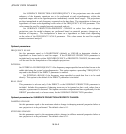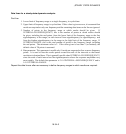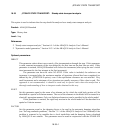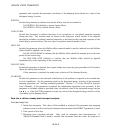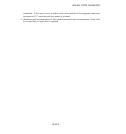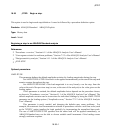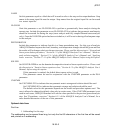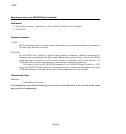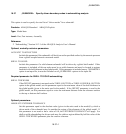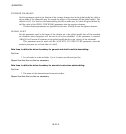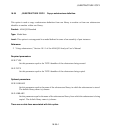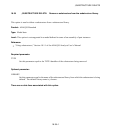*
STEP
CONVERT SDI
This parameter determines how severe discontinuities (such as contact changes) are accounted for
during nonlinear analysis.
Set CONVERT SDI=NO(de fault) to force a new iterati on if severe discontinuities occur during
an iteration.
Set CONVERT SDI=YES to estimate residual forces associated with severe discontinuities
and check whether the equilibrium tolerances are satisfied. Hence, a solution may converge if the
severe discontinuties (such as penetrations or tensile contact forces) are small. This option also
changes some time increm entation parameters and uses different criteria to determine whether to
do another iteration or to make a new attempt with a smaller increment size.
If the CON VERT SDI parameter is omitted, A BAQ US/Standard will use the value specified in
the previous general analysis step. The default can be changed with the environment and comm and
line variable convert_sdi.
This parameter has no relevance and will be ignored for heat transfer analysis and linear
perturbation steps.
DSA
This parameter applies only to A BAQUS/Design.
Set DSA=YES to activate design sensitivity analysis for the step. Once DSA is activated in a
general step, it remains active in all subsequent general steps until it is d eactivated in a subsequent
general step by setting DSA=NO. Once DSA is activated in a perturbation step, it remains active
in all subsequent consecutive perturbation steps until it is deactivated in a subsequent consecutive
perturbation step. H owever, if DSA is activated in a step whose procedure is not supported for
DSA, DSA will be deactivated until it is activated again by setting DSA=YES.
EXTRAPOLATION
This parameter is useful only for nonlinear analyses.
Set EXTRAPOLATION=LINEAR (default) to indicate that the process is essentially
monotonic, so that ABAQUS/Standard should use a 100% linear extrapolation, in time, of the
previous incremental solution to begin the nonlinear equation solution for the current increment (a
1% extrapolation is used with the Riks method).
Set EXTRAPOLATION=PARABOLIC to indicate that the process should use a quadratic
extrapolation, in time, of the previous two incremental solutions to begin the nonlinear equation
solution for the current incre ment.
Set EX TRAPOLATION=NO (not available for dynam ic or Riks method analyses) to suppress
any extrapolation.
INC
Set this parameter equal to the maximum number of increments in a step (or in a single loading
cycle for direct cyclic analysis). This value is only an upper bound. The default value is 100.
The INC parameter has no effect in procedures where automatic incrementation cannot be used
(for exam ple,
*
BUCKLE,
*
STEADY STATE DYNAMICS, and
*
MODAL DYNAMIC).
18.36–2
ABAQUS Version 6.1 Module:
ID:
Printed on:



